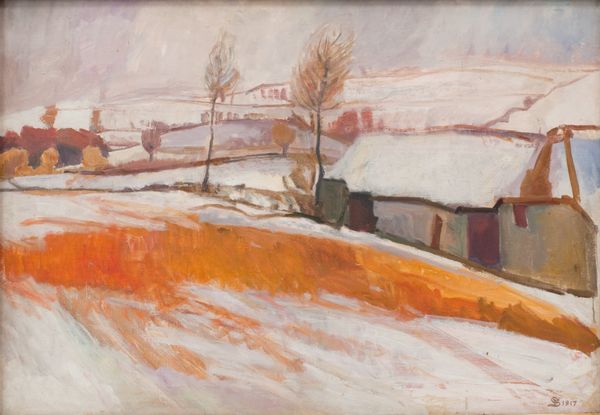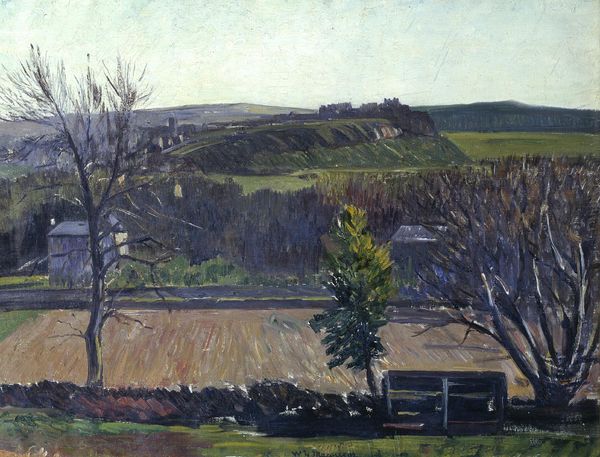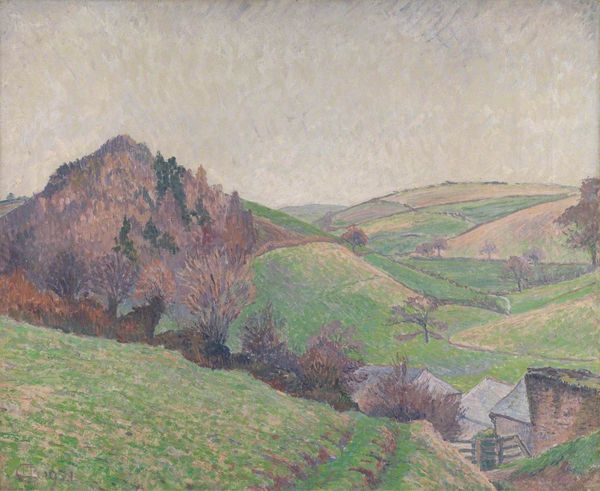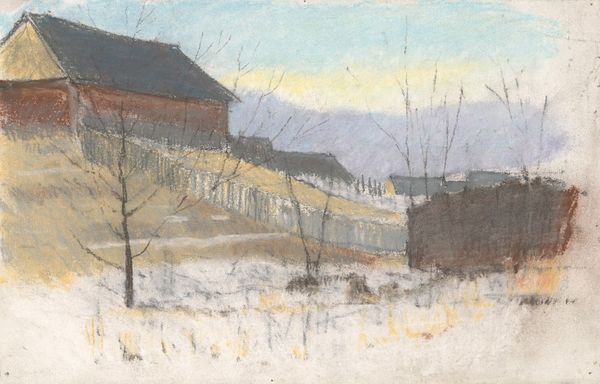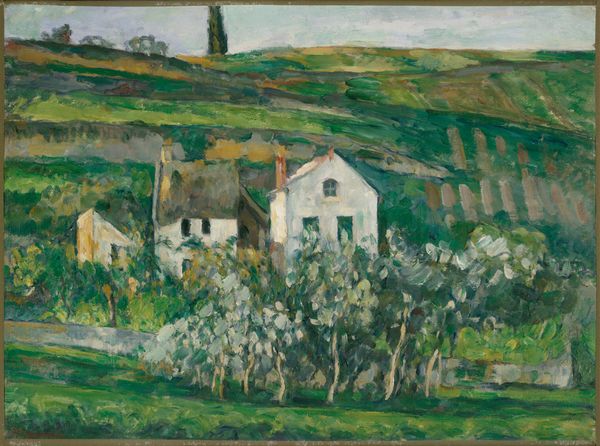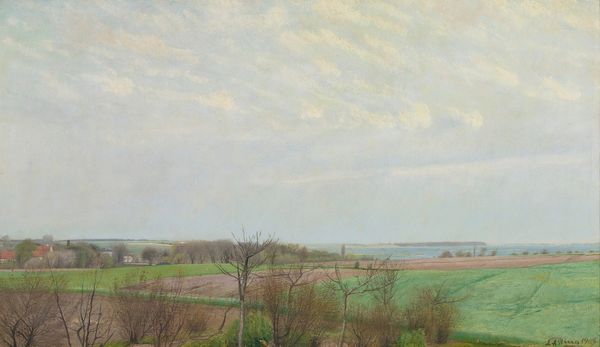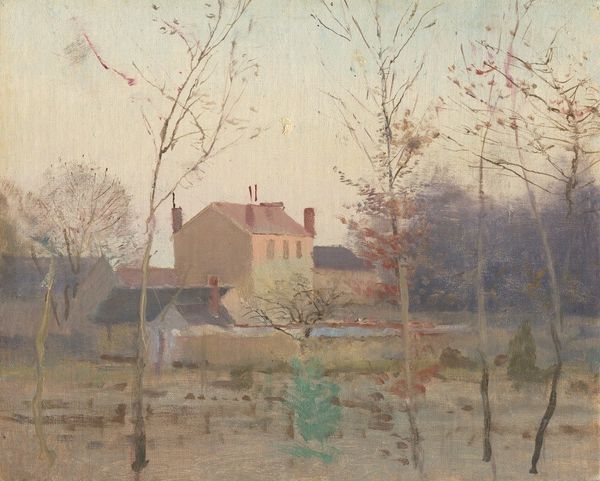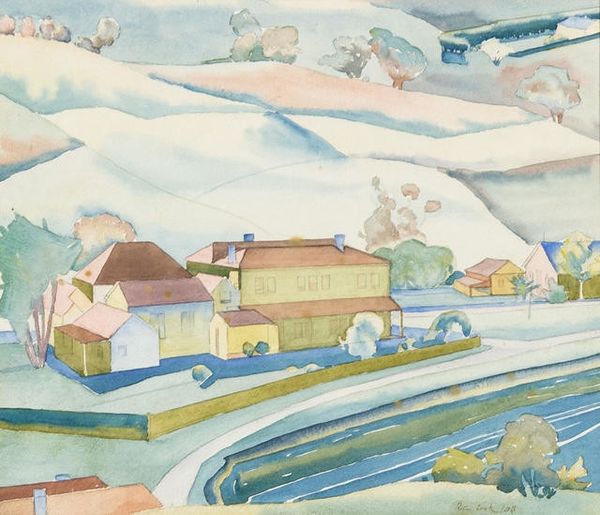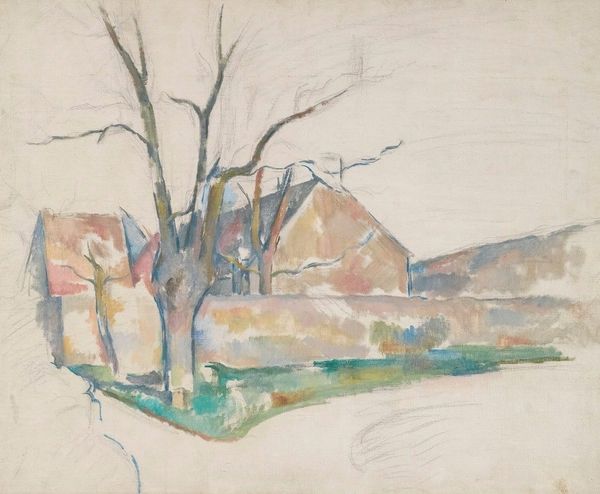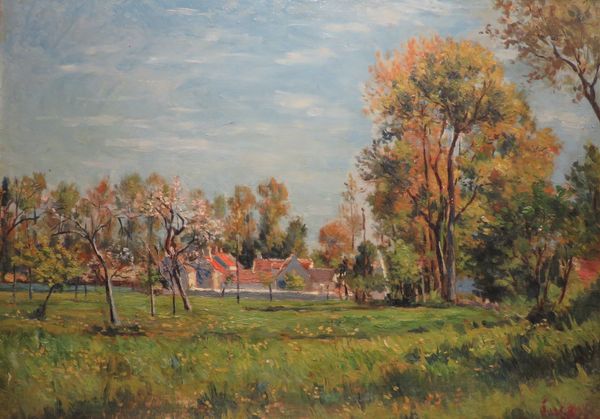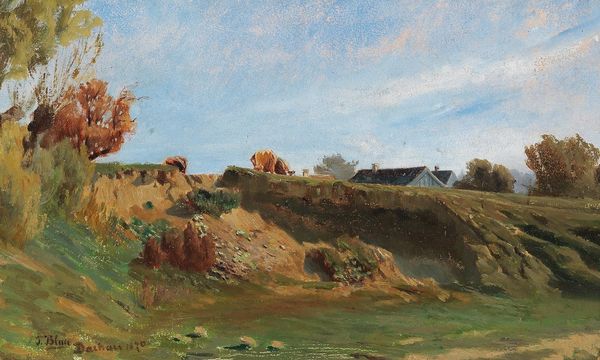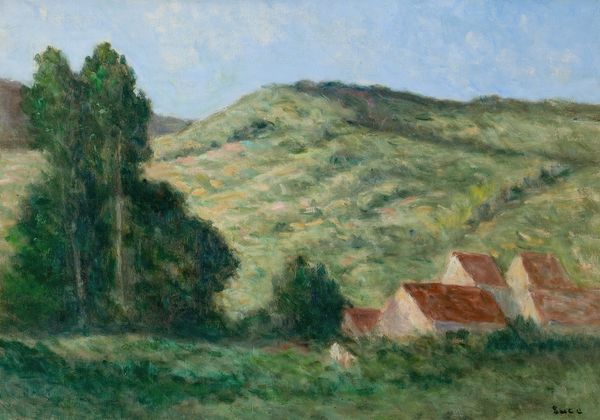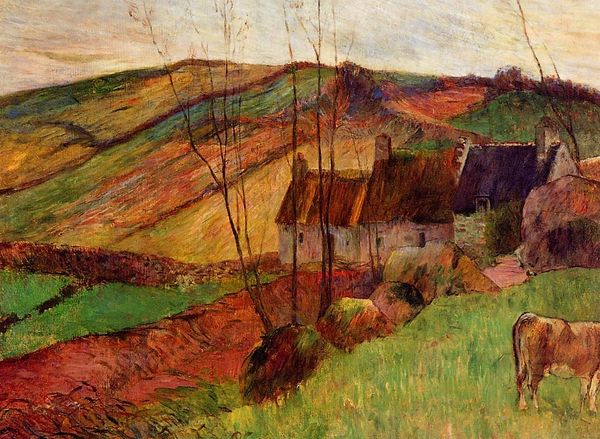
painting, watercolor
#
portrait
#
narrative-art
#
painting
#
landscape
#
figuration
#
oil painting
#
watercolor
#
symbolism
#
watercolor
Copyright: Public Domain: Artvee
Curator: Jacek Malczewski's watercolor, "Angel with Tobias," created in 1902, presents a fascinating juxtaposition. I see a ghostly scene emerging on the edge of consciousness, like a dream fading into the morning. Editor: Immediately I'm drawn to the material execution. The watercolor technique lends a delicate, almost ephemeral quality to the figures. It softens their presence against the rather earthy landscape. You see the pigments thinly spread, layered one over another creating transparency and subtle modulations of color. Curator: It's more than just ethereal; it resonates with a deeper narrative. Tobias, in the Apocrypha, undertakes a journey guided and protected by the Archangel Raphael. That guidance, that divine protection, is visibly embodied here. The landscape could represent the journey itself, a path both physical and spiritual. Editor: That journey looks rather… pedestrian. Working in watercolor on paper—a relatively accessible medium for its time—suggests perhaps a democratized spirituality? Was Malczewski speaking to a broader public about the possibility of divine intervention in ordinary lives, rather than in cathedrals and palaces? Curator: Perhaps. The angel, after all, is rendered with an almost disarming humanity. It doesn’t loom large or radiate with overwhelming light. Instead, there's a quiet solidarity. It’s less about a grand divine decree and more about everyday protection against earthly adversity. Remember Malczewski was deeply immersed in the Polish struggle for independence; consider also how potent images of protection are within contexts of displacement. Editor: So you're suggesting that even humble materials and commonplace landscapes can become sites for the transmission of significant symbolic weight. Watercolor becomes a medium for articulating the hopes for national and personal salvation through the guise of this apocryphal journey. But is it a visual representation of divine presence, or simply, a painted symbol meant to stir our empathetic sense? Curator: Perhaps a delicate dance between both, wouldn't you agree? The strength is less about declaring faith and more about creating a space where faith and doubt can co-exist within the frame of shared human vulnerability. Editor: Precisely! It seems that Malczewski transforms the means of artistic production into a vessel to question the viewers perception and sense of meaning of material reality itself. Curator: Yes, now I feel enriched having shared this view.
Comments
No comments
Be the first to comment and join the conversation on the ultimate creative platform.
